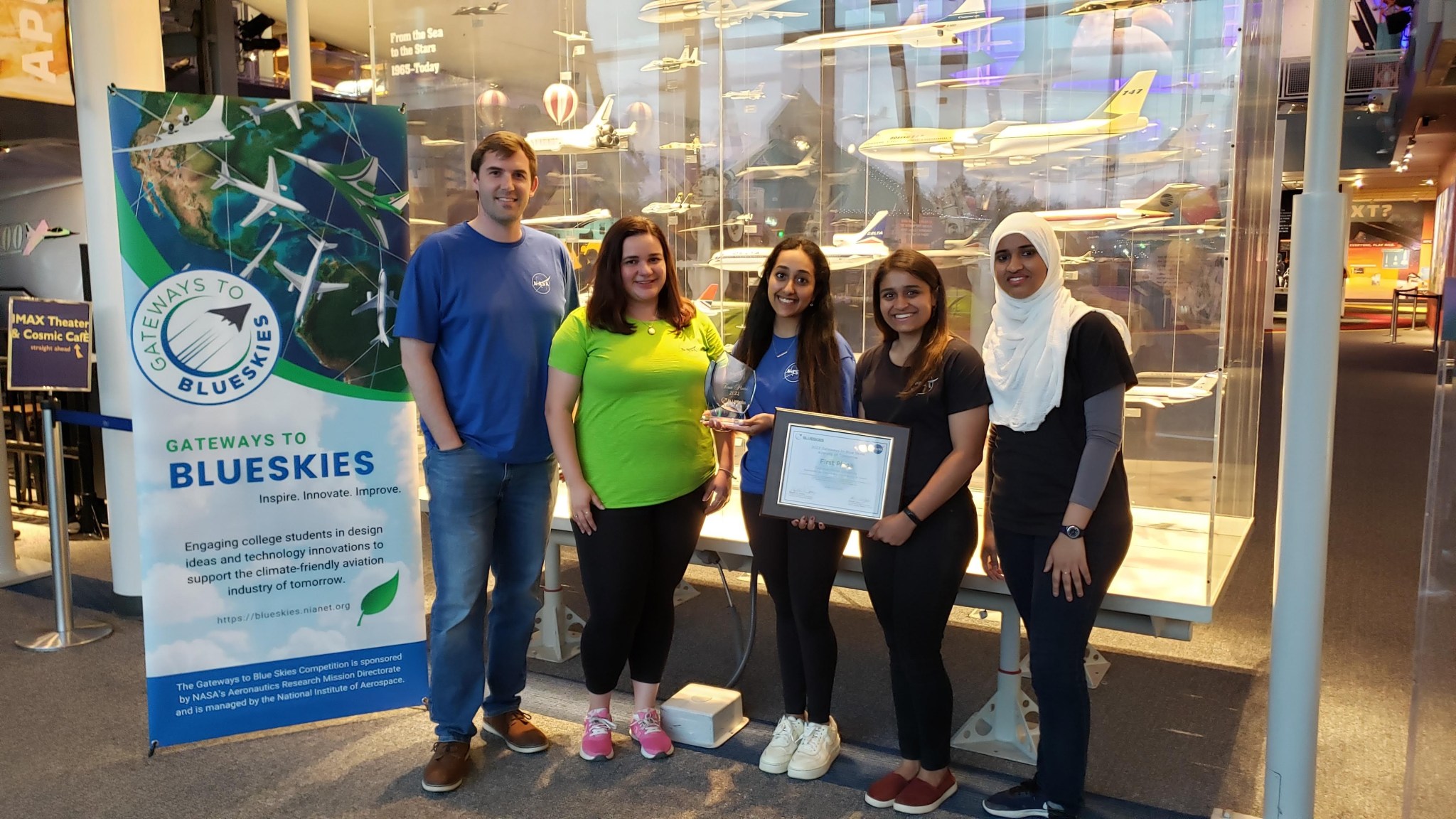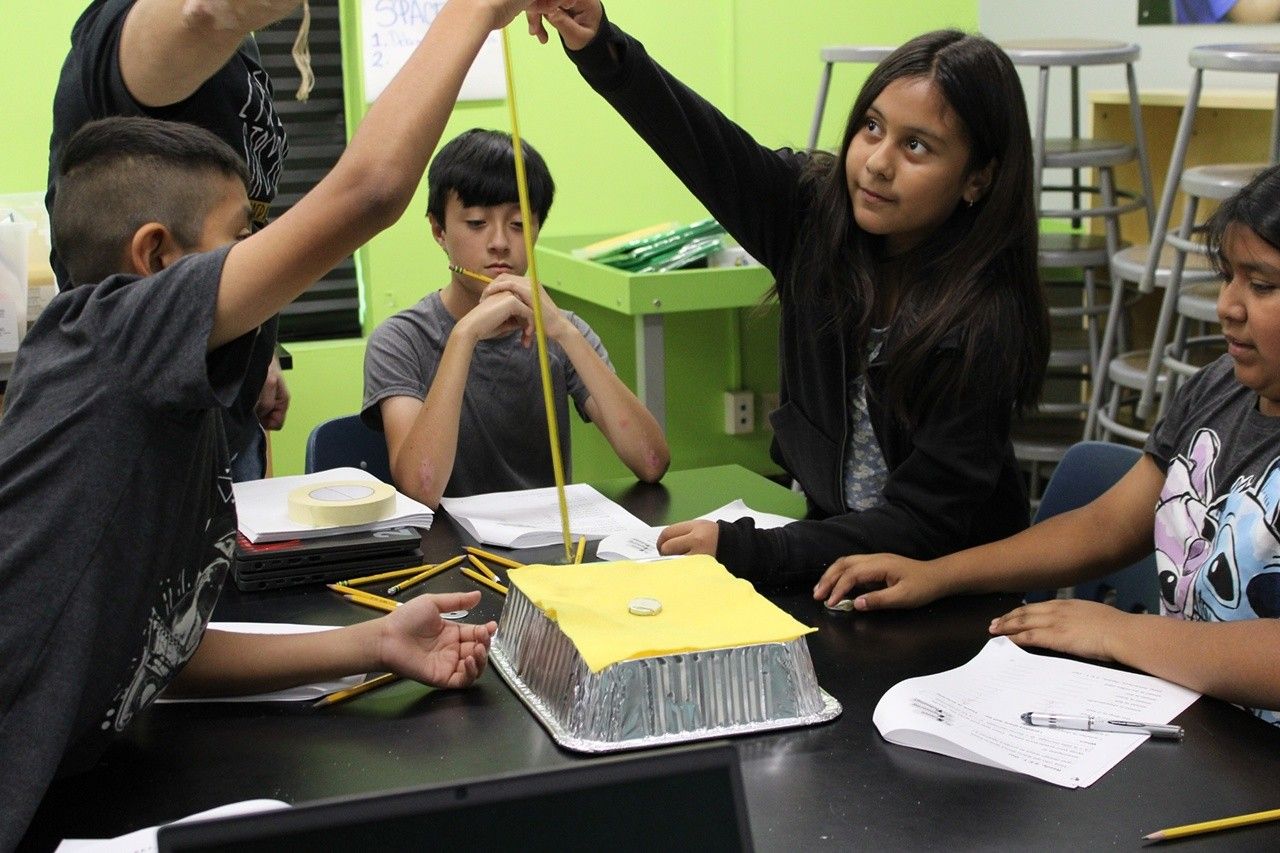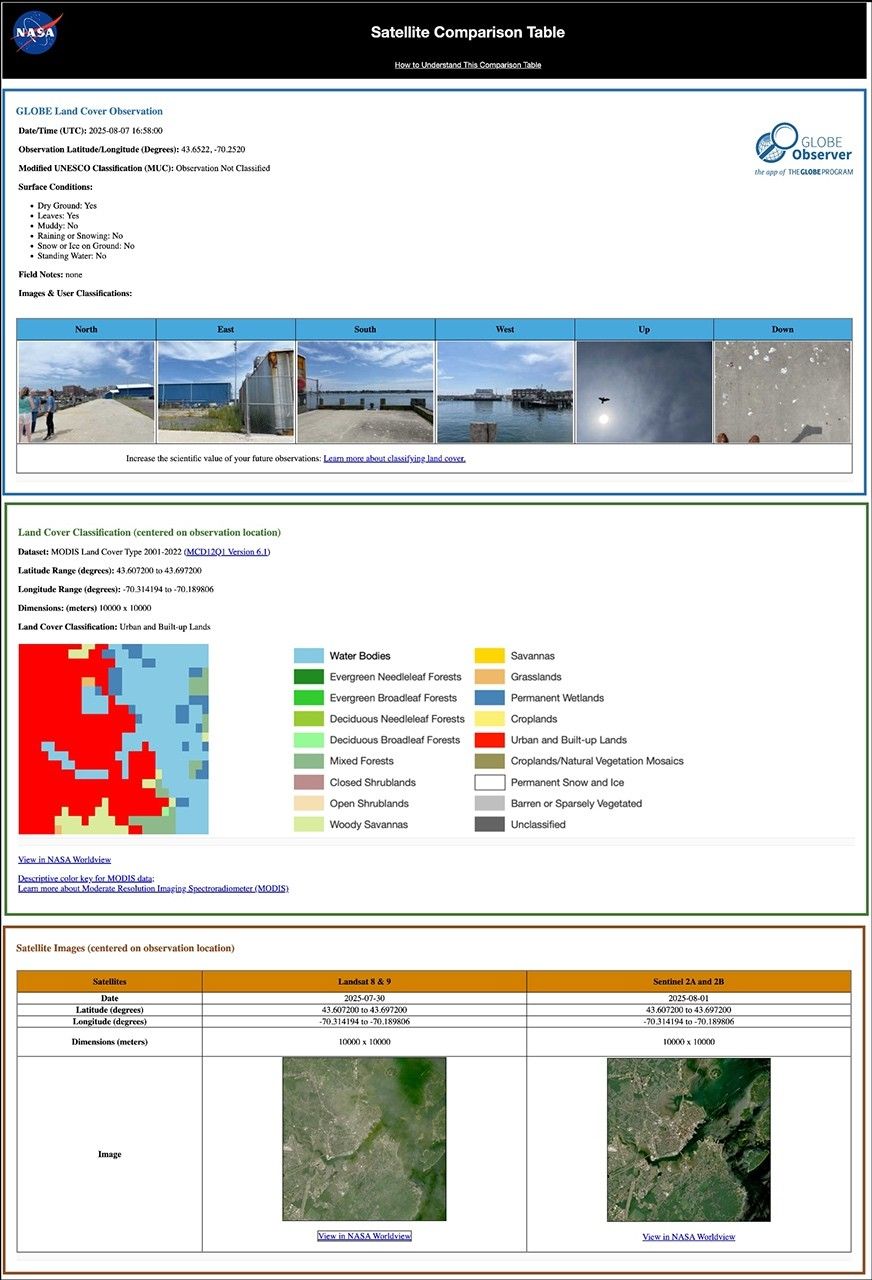The Carnegie Mellon University team, with their project titled, Sustainability and Connected Autonomy: A New Era for Aviation, took first place in the inaugural Gateways to Blue Skies Competition. Competing among eight finalist teams who presented their ideas for future airport design updates needed to accommodate climate-friendly aviation advancements, the team earned the top award at the 2022 Blue Skies Forum, hosted at NASA’s Langley Research Center on June 2-3. The Forum was judged by subject matter experts from NASA and industry.
The Carnegie Mellon team was awarded an opportunity to intern at any of the four NASA Aeronautics Centers across the country, during the 22-23 Academic Year. They were also awarded an opportunity to present their climate-friendly airport integration concept at the Airports Council International – North America Annual Conference and Exhibition on September 18, 2022 at the Minneapolis Convention Center In Minneapolis, Minnesota.
“We are honored to have participated among such innovative groups,” said Carnegie Mellon Team member Ioana Iacob. “What we focused on was looking at the issue holistically. Solving complex engineering problems requires an interdisciplinary understanding of the science, the policy, the engineering, the public perception, and the government-industry intersection that all need to be considered and addressed for the long-term success of these large-scale projects.”
Second place went to Ohio State University and their project, ECOAir.
Other awards included:
- Best Presentation and Infographic
- University of Texas, Austin
- Bluebonnet Skies
- University of Texas, Austin
- Most Intriguing Concept
- University of Pennsylvania
- Carbon Negative: A Modular Approach to Advancing Green Airport Infrastructure
- University of Pennsylvania
- Special invitation to present concepts to the Las Vegas Airport Strategic Planning Committee for development of the newest United States international airport
- University of Pennsylvania – Carbon Negative: A Modular Approach to Advancing Green Airport Infrastructure
- Ohio State University – Project ECOAir
Sponsored by NASA’s Aeronautics Research Mission Directorate, the Gateways to Blue Skies Competition is an initiative to engage college students in researching climate-friendly technologies and applications that will establish a net-zero emissions future for aviation. The 2022 theme asked students to assess the 2050s aviation landscape, including aircraft design, alternative fuels, aircraft operations, efficiency improvements and other incoming advancements that will be the foundation of a climate-friendly aviation future. Using these findings, students determined and justified proposed changes to existing airports or new airport designs to accommodate such changes.
Teams submitted designs to accommodate blended wing-body planes and electric aircraft, paired renewable energy considerations with sustainable construction and infrastructure, and included vertiports for short-distance airport traffic. They addressed aircraft boarding, charging infrastructure, fuel infrastructure, and jetway access accommodations. Some included incoming de-icing processes that are more sustainable than current practices.
“There are a myriad of technologies coming into play as we approach a 2050s aviation landscape,” said Steven Holz, NASA University Innovation Assistant Project Manager and Blue Skies Competition Co-Chair and Program Sponsor. “These students engaged with NASA’s aeronautics goals and research in a new way through this competition, and we are pleased with their efforts and submissions. Students came together with NASA subject matter experts and industry experts in an onsite forum where they were exposed to new ideas, different concepts, and even had the chance to tour NASA Langley facilities and get a close look at some of the work we’re doing in NASA Aeronautics.”
As students link work being done in NASA’s four aeronautics research centers to future applications, they will gain real insight into potential careers and applications that will continue to further NASA’s push toward eco-friendly aviation in the future.
“This is exactly what we hoped this program would achieve in its first year: Eight finalist teams coming together with new concepts, sharing with and learning from NASA and industry leaders as they progress in their school and early professional careers,” said Mina Cappuccio, NASA University Innovation Deputy Project Manager and Blue Skies Competition Co-Chair and Program Sponsor. “It is important that we find ways to ensure the work done at NASA doesn’t stay at NASA; we want it to reach tomorrow’s aviation leaders in new ways. That’s what Gateways to Blue Skies is all about.”
The 2022 Gateways to Blue Skies Competition is sponsored by NASA’s Aeronautics Research Mission Directorate and administered by the National Institute of Aerospace.
****
View the livestream of the competition presentations: https://livestream.com/viewnow/blueskies
View team records of the competition: https://blueskies.nianet.org/2022-record/
To learn more about the 2022 Gateways to Blue Skies: Airports of Tomorrow Competition, visit: https://blueskies.nianet.org/2022-competition/
For more information about NASA Aeronautics, visit: https://www.nasa.gov/topics/aeronautics/index.html



































